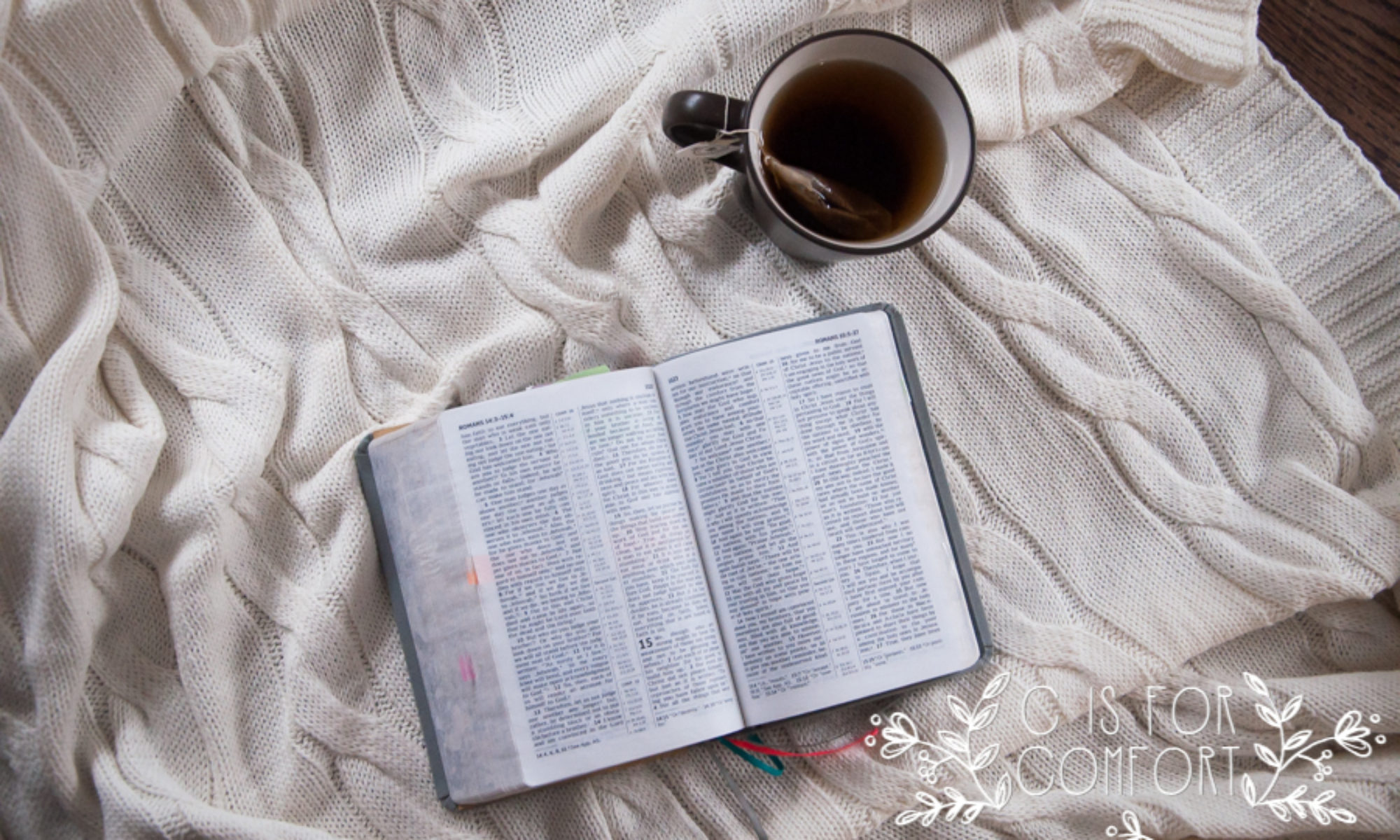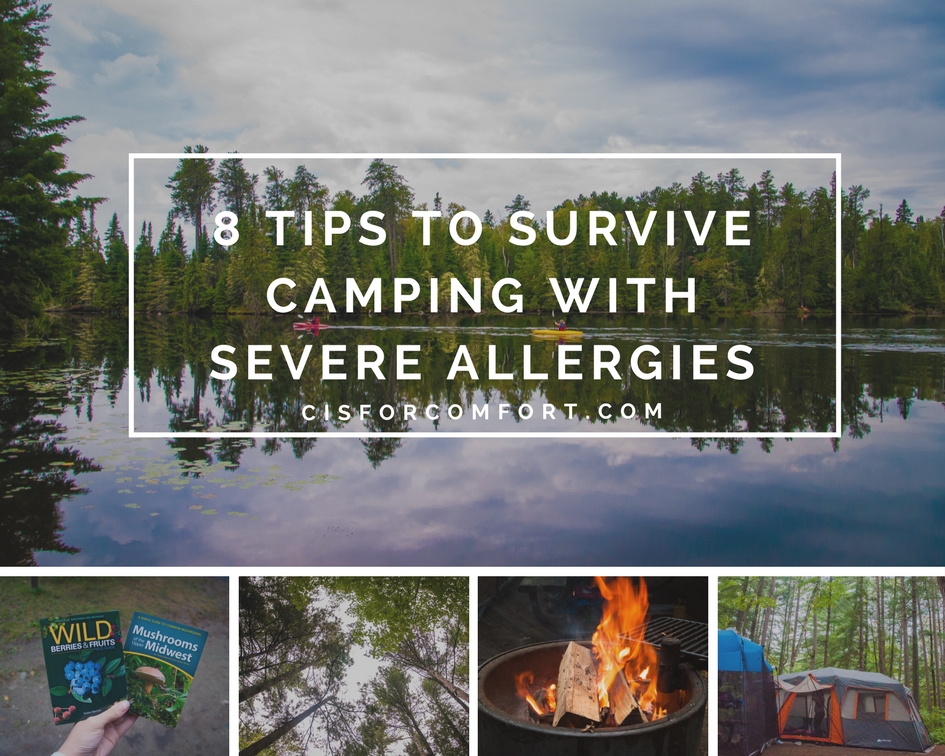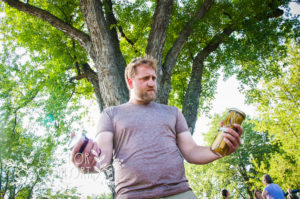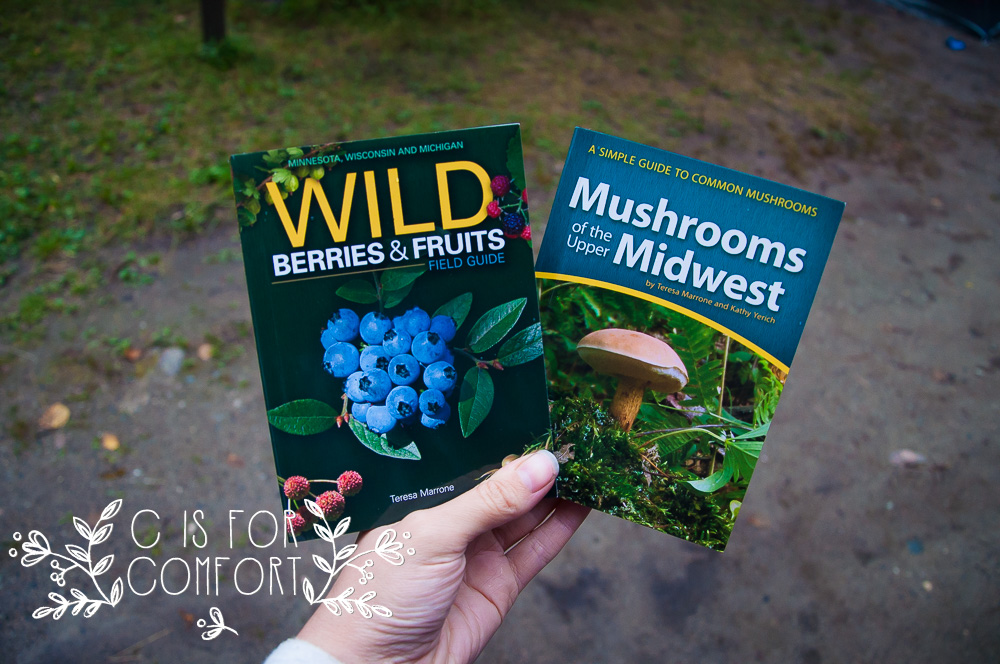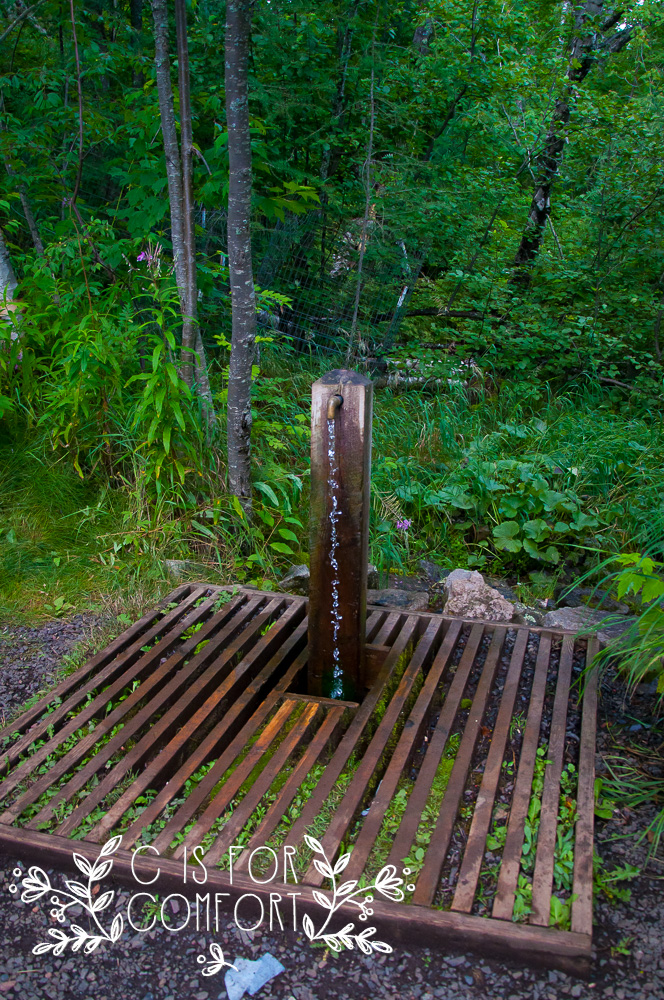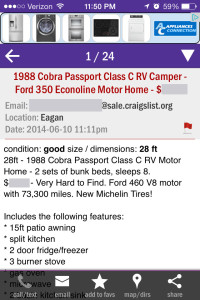8 Tips to Survive Camping With Severe Allergies
Camping with allergies can be difficult, but it’s not impossible! Like most things with severe allergies, camping takes a lot of planning and preparing. Knowing what to do and how to plan is one the hardest parts. Hopefully, I can help you with that!
1. Make a Schedule
I try to make a rough outline of not only each day of my camping trip but also the weeks before it. This helps me to leave enough time on the schedule to make sure I didn’t forget anything. With a normal camping trip, if you forget something, you can run to the nearest store. With severe allergies, that’s not always possible, as most stores do not carry the necessary specialty items.
My schedule is usually outlined in a notebook like this:
- 4-12 Months Before Camping: Pick and Reserve Date for Camping
- 10-8 Weeks Before Camping: Research Area-Food and Water Sources, Activities, Medical Care
- 4-6 Weeks Before Camping: Plan Schedule and Menu, Mail Order Necessary Food, Check Medical Supplies To Order New Or Low Items, Vehicle Maintenance, Set Up Pet Sitter, Mail Grabber and Plant Waterer
- Week Before Camping: Food Prep, Home Absence Prep, Verify Pet Sitter, Plant Sitter, and Mail Grabber, Pack Non-Food Items, Wash & Pack Clothes, Clean Out Fridge
- 2nd Day Before Camping: Charge Camera Batteries, Pack Remaining Items, Remaining Food Prep, Check Medical Supplies, Pack Non-Perishable Food
- Day Before Camping: Fully Charge Phones, Bathe Children, Pack Remaining Non-Perishable Items, Load Vehicle, Water Plants, Leave Money and Thank You Note for House Sitter/Plant Waterer/Pet Sitter
- Camping, Day 1: Shower, Quick Breakfast, Add Perishables to Cooler, Pack Remaining Items, Load Remaining Items, Double Check House, Double Check Medical Supplies, Drive To Camping Spot, Eat Easy Snacks or Packed Lunch on the Way, Set Up Tent, Scope Area, Dinner, Campfire, Bed
- Camping, Day 2: Breakfast, Activity, Lunch, Activity, Dinner, Campfire, Bed
- Camping, Day 3: Breakfast, Activity, Lunch, Activity, Dinner, Campfire, Bed
- Camping, Day 4: Breakfast, Activity, Smorgasborg Lunch, Activity, Smorgasborg Dinner, Use Up Remaining Wood in Campfire, Bed
- Camping, Day 5: Breakfast, Shower, Pack, Load, Lunch On The Road, Drive Home, Dinner
2. Make A Menu
Menu planning is probably the most important activity. Finding safe food locations around home usually takes a few months to years with a lot of food trials. Camping is not a great time to trial food, as you don’t want to be sick while camping. It is the most time-consuming task of your camping prep, but it’s worth the work. At least, that’s what I tell my self when I’m up to my elbows in massive food prep operations.
It’s usually the food concerns that give me the most camping related anxiety and stress. It’s expensive, it’s time-consuming, it’s stressful. I usually freak out during my week countdown to camping. Since most of my food is prepared from scratch, it must be made directly before camping to prevent spoilage. Once we are on the road, I finally relax and breathe a sigh of relief. Everything is prepped, now it’s time to relax!
I try to make food prep fun by involving the kids so that they can learn some useful skills, and also lend poor old Mom a hand. Some of their foods are not safe for me to eat, but they are safe enough for me to be around. I usually make two batches of whatever food is safe for me vs safe for them, because my safe food can be more expensive.



I usually go a little overboard in making sure I have enough safe food for the entire trip. Most of my safe food is what would be considered snacks. That is kind of my normal routine though. I generally don’t eat breakfast or lunch unless it’s a special occasion. I’m not a big meal person. I provide food for my entire family for these meals since they seem to enjoy them.
Dinner is the one meal I always put a lot of work and effort into. We all sit down together and enjoy a meal. It’s one of my favorite parts of the day. Camping is a reflection of what we do at home. We eat snack-like things throughout the entire day, but I still schedule breakfast and lunch so I can make sure my kids are fed. Dinner is our time to relax and hang out around the campfire after an adventurous day.
3.Inventory Stock
It’s always a good idea to have an inventory of your food supplies. Planning ahead and being prepared is one of the best ways to avoid exposing yourself to dangerous foods. If you run out of safe food, you’re more likely eat whatever is nearest to you, regardless of its safety. Or, if you have self-control, you might have only limited foods to eat and end up going hungry till your next shipment comes in.
If you don’t regularly keep inventory, then at least make a menu for the week prior to camping and the period of time you’ll be gone. Make a complete list of every item you’ll need and start ordering at least a couple of weeks before you have to go.
Waiting until the last minute is not a good idea. Items can take longer to ship, get held up for any reason, or get lost. If you give yourself a reasonable amount of time for error, then you’ll be well prepared ahead of time. Unlike non-allergy people, those with severe allergies cannot get food on the go or at the location. If your order doesn’t show up, this means your trip might be delayed or even canceled.
Also, don’t forget to plan for the meals you’ll be eating when you get home! If you use up all of your safe supplies for camping, you might be out of food when you arrive back home. This is where keeping a regular inventory and planning ahead come in handy.
4.Double Check Medical Supplies
Double or even triple check your medical supplies. Make sure you have what you regularly use and a backup. Make sure you have emergency paperwork printed out. I keep mine in my purse all the time, but sometimes it’s good to have a backup in your camping supplies, should your purse or bag get stolen.
It’s always a good idea to have any prescriptions regularly up to date. You can keep a printed prescription refill in your supplies in case of an emergency. I had an emergency incident where I was having an asthma attack and I went to refill my inhaler prescription at a pharmacy. My prescription had just expired and the pharmacy couldn’t get hold of my doctor and refused to give me an inhaler without it. I had a full asthma attack and started turning blue. Thankfully, my Dad arrived and had someone call an ambulance. It’s always good to have backups and backups for your backups! If my parents hadn’t been able to rush to me with an emergency inhaler, I might have died in front of an audience, sitting right next to the pharmacy.
I always keep my inhaler, epi-pen, and medical emergency paperwork in my purse now. I never go anywhere without my purse. This has saved my life on more occasions than I can count.
See what’s in my bag.
If you compose a medical folder, you can include these things:
- Local Map with Medical Locations Highlighted
- ER Paperwork
- Medical History
- Back up Prescriptions
5.Find Local Emergency Health Services
No matter how much planning is done, there is always the risk of having a medical emergency. It’s best to have a general idea of where the nearest emergency room, pharmacy, or local medical services are.
Either print out the information of the location or save the info under the contacts on your phone. You could do both if you’re assembling a medical folder to bring with.
You can download google maps, of the area you’ll be in, ahead of time if you’ll be in an area where there is little to no service.
6. Find Local Safe Food as Backup
Every place I’ve camped, I’ve researched local health food stores or farmers markets available ahead of time. Should I run out of food, lose food to wildlife or have an unforeseen accident, I want to be sure I have a backup so I don’t have to go home early.
This year, there was a farmers market in Ely that we visited. We were able to get some organic, spray free carrots for Princess and me to snack on and some fermented veggies and kombucha for the family. I also found a guy who was selling pure, maple syrup with no defoamer added.
Last year, there was a health food store in Grand Marais that carried a few of the foods I can safely eat. I was able to pick up a couple things to supplement my normal food.
7.Learn About Local Foods to Forage
This is kind of a lifetime thing to learn. Foraging for foods should now be on your new “normal” list of things to do. If you’re new to this, it might sound strange.
“You mean, you can find food outside? On the ground? In the woods?”
The answer is yes! People have been doing this since the beginning of time! Foraging has only recently become less common due to the convenience of packaged foods. We have become disconnected from our food source, the Earth! Food doesn’t originate in the store, as though it popped up overnight in perfectly arranged and identical boxes and bags. It grew outside, from the ground. It’s time to skip the middleman.
Now, you do need to be educated about foraging. Get a few books, watch a couple youtube videos, take a class, grow some of your own in your garden, get real hands-on experience. You can’t just go out into the woods and expect the food to beckon to you.
Once you start learning about foraging, you’ll start finding food everywhere you go! Although, since you’re also battling severe allergies, you need to be in tune with your body to know what is safe and what isn’t for you. So if asparagus is growing in a ditch next to a cornfield, and you’re allergic to corn, you might want to skip it. If you’re in the middle of the woods, hours away from civilization and you find some fresh raspberries, then you’re good to go! As a general rule, even if I 100% believe the food to be safe, it’s always good to be educated about plants that look similar to safe foods but are toxic. For example, mushrooms and berries have a lot of variation, some safe mushrooms look similar to toxic mushrooms. If you are not an expert, it’s best to avoid them altogether. Berries are a little on the safer side, but there are still toxic berries out there. Many lettuces and leafy plants are safe, but you still want to steer far from poison ivy or poison oak while you’re searching.
8. Look for Local Springs
I love spring water. Spring water from up north is the cleanest, most delicious water I’ve ever had. I want to move near it just so I can have fresh, clean, and safe water all the time.
For someone with severe corn or chemical allergies, finding a safe source of water can be difficult. Bottled water usually has corny additives and is purified and treated with chemicals. The bottles can be made from plastic made from corn or chemicals that are toxic. Tap water is full of chemicals used to sterilize germs and bacteria, chemicals to remove discoloration and it even has toxic chemicals like fluoride added to it. In addition, a lot of things are not filtered out at water treatment plants, things like pesticides, birth control, antidepressants, and other prescription drugs. Some water tests have even found levels of illegal drugs. Almost everything I’ve just listed was produced with corn or was directly derived from corn, which is why it is extra toxic to someone with corn allergies.
Spring water is not always completely pure from contaminants, but it’s usually a significantly lesser amount than water found anywhere else. In addition, there is usually beneficial minerals from the underground natural filtration systems of rocks and sand. It also has a significantly low PH level which is beneficial for a healthy body.
You can look online to see if there is a spring near you at the website Find A Spring There was an artesian well at one of the State Parks that we stayed at that is not located on the list, so it’s always a good idea to call the office and ask about locals springs or wells in the area.
I hope that by sharing what I do to prepare for vacation helps inspire you to be able to go camping yourself! Going camping with severe allergies can be difficult, but we need a break from the stress of daily allergy-free lifestyle every once and awhile. Enjoying the great outdoors with fresh air and sunshine is something I look forward to every year.
Do you have a medical condition that you work around so that you can enjoy camping? I’d love to hear about it! Please tell me what you do in the comments.
